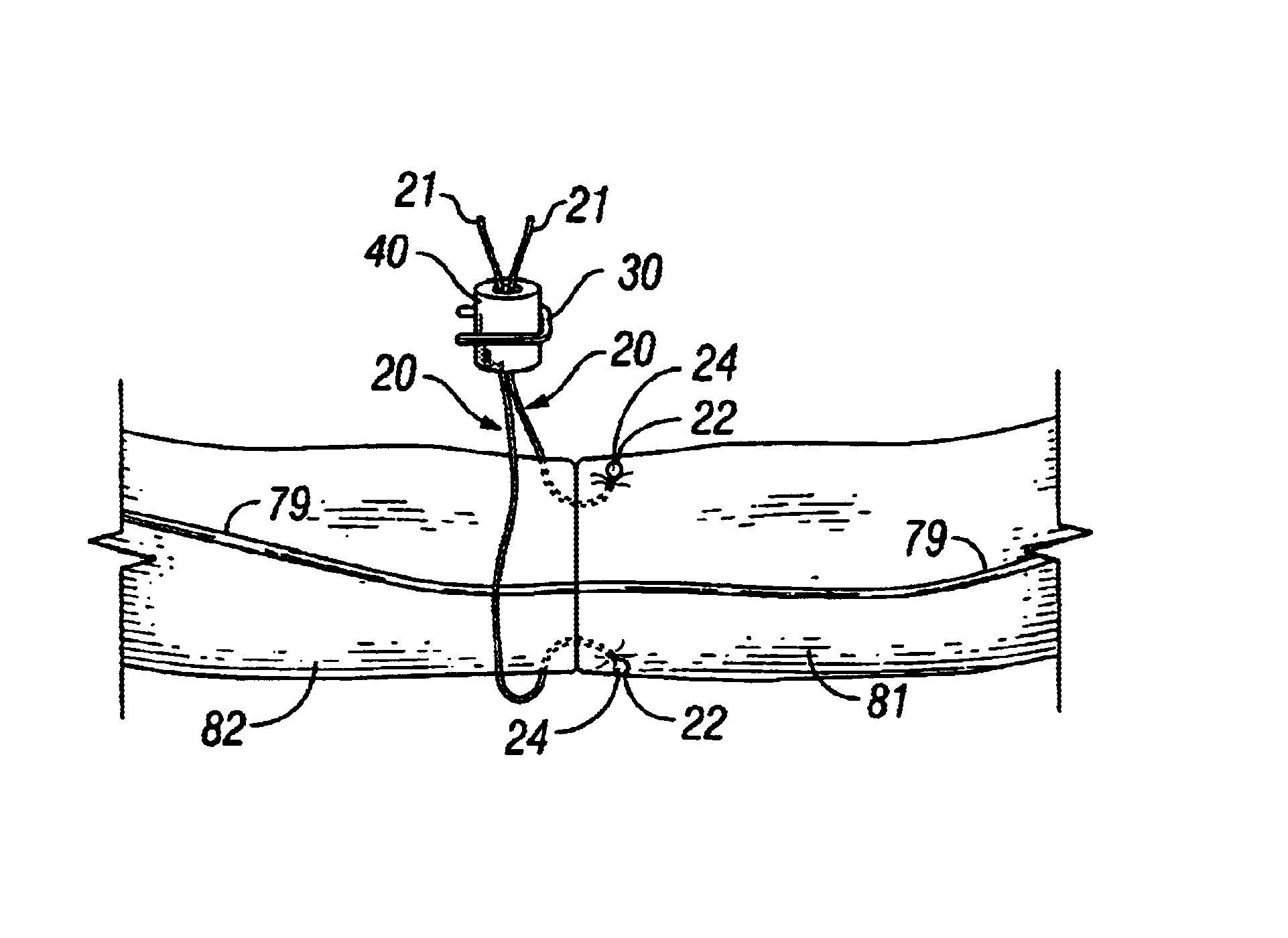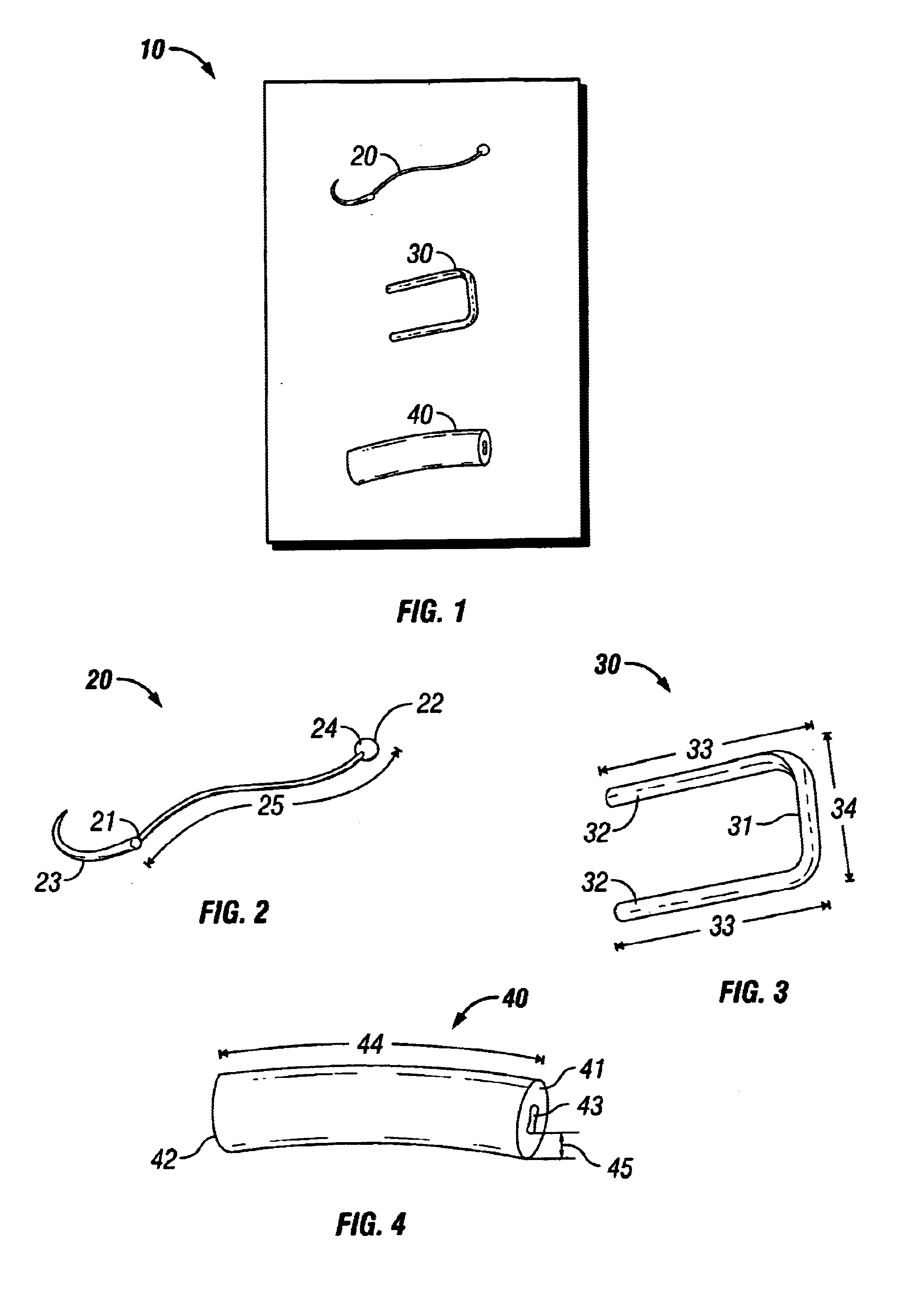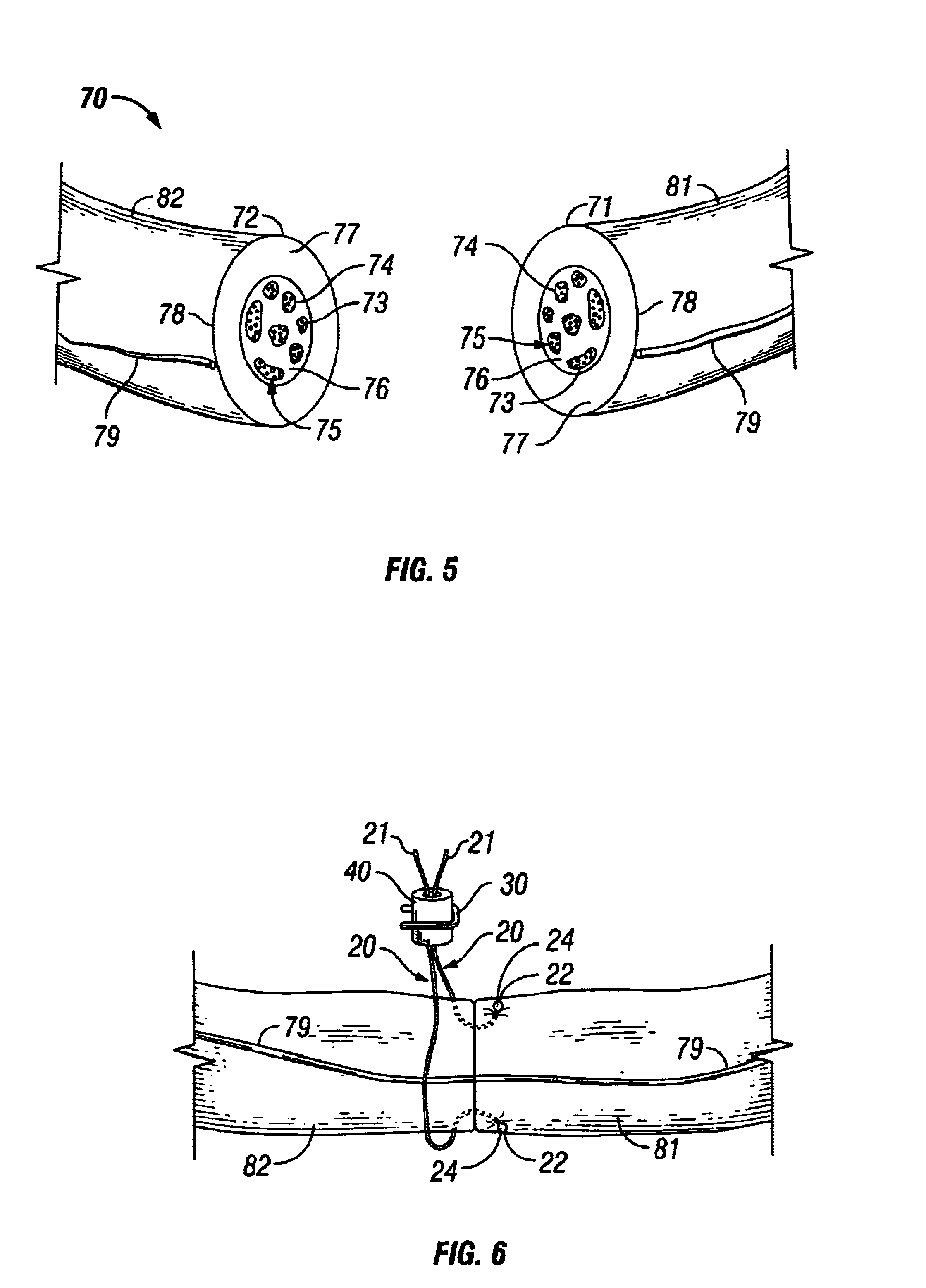Surgical system for repairing and grafting severed nerves and methods of repairing and grafting severed nerves
a surgical system and nerve technology, applied in the field of cavernous nerve grafting, can solve the problems of partial or total loss of sensation, control, use of a member or portion of the body, inability to achieve complete restoration of sensation, control, etc., to achieve the effect of reducing trauma to facilitating proper alignment of the severed nerve end, and increasing the visibility of the anastomosis si
- Summary
- Abstract
- Description
- Claims
- Application Information
AI Technical Summary
Benefits of technology
Problems solved by technology
Method used
Image
Examples
Embodiment Construction
The present invention is directed to a surgical system, or kit, for repairing severed ends of a damaged nerve. The surgical system may be used to adjoin the ends of a severed nerve or adjoin the ends of a severed nerve and the ends of a nerve graft. A nerve graft may be a nerve from a donor, or another nerve located within the body containing the severed nerve. The surgical system may also be used to repair severed nerves.
Referring now to FIGS. 1-4, in one embodiment of the present invention, a surgical system includes a suture 20, a surgical vessel clip, or clip, 30 and a guide, or retaining member 40. Suture 20 has a first end 21 and a second end 22. First end 21 is connected to a needle 23. Second end 22 preferably includes an expanded tail 24.
Suture 20 includes a length 25 that may be any measurement desired or necessary to suture the nerve. In one specific embodiment, suture 20 is approximately 1.5 inches, or long. Further, suture 20 may be made out of any material known to per...
PUM
 Login to View More
Login to View More Abstract
Description
Claims
Application Information
 Login to View More
Login to View More - R&D
- Intellectual Property
- Life Sciences
- Materials
- Tech Scout
- Unparalleled Data Quality
- Higher Quality Content
- 60% Fewer Hallucinations
Browse by: Latest US Patents, China's latest patents, Technical Efficacy Thesaurus, Application Domain, Technology Topic, Popular Technical Reports.
© 2025 PatSnap. All rights reserved.Legal|Privacy policy|Modern Slavery Act Transparency Statement|Sitemap|About US| Contact US: help@patsnap.com



